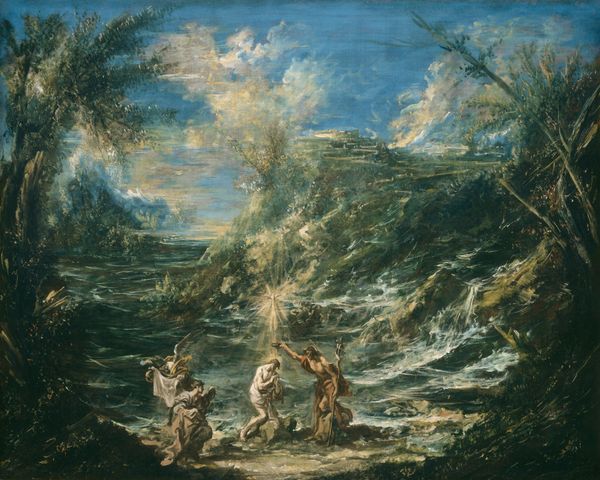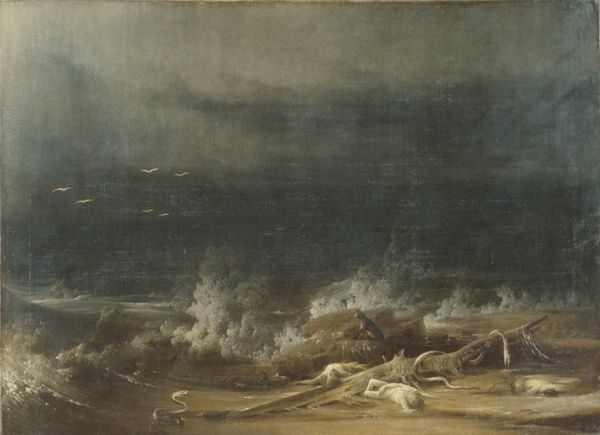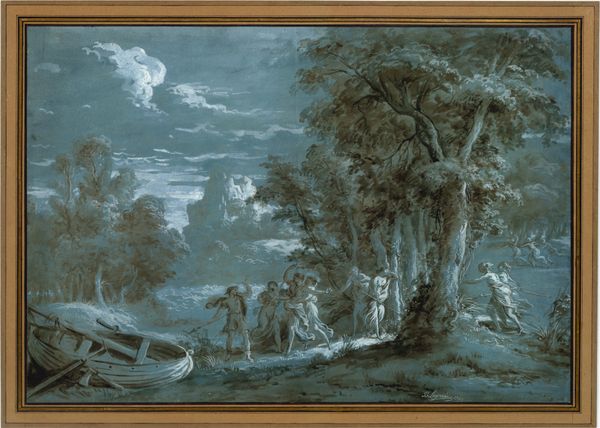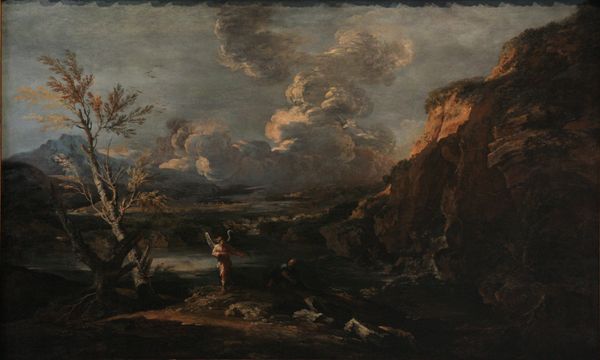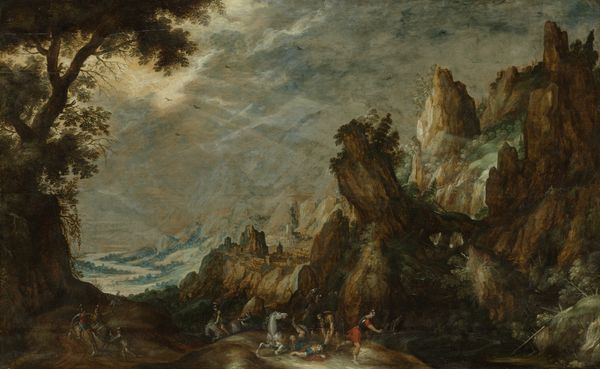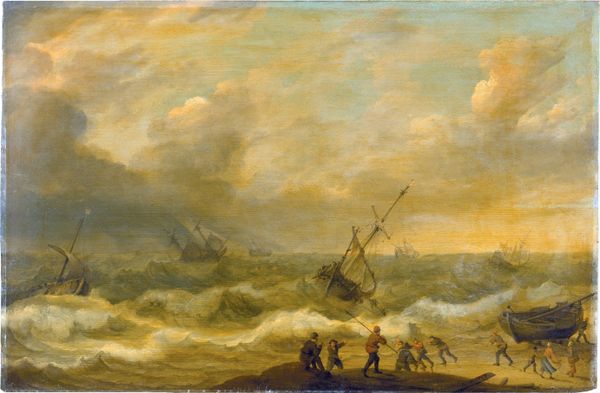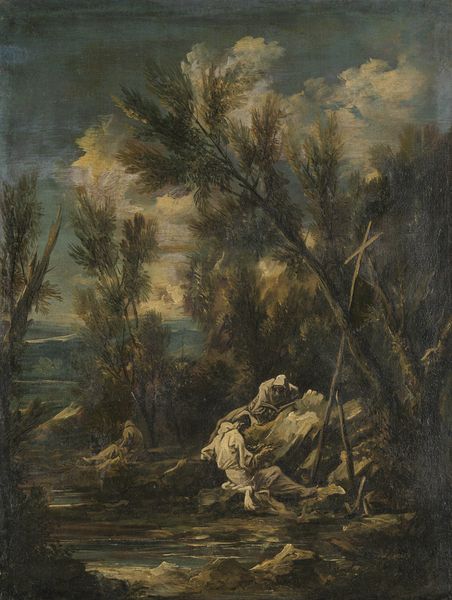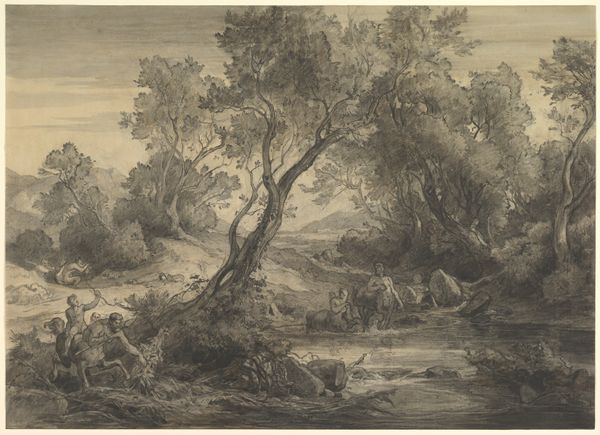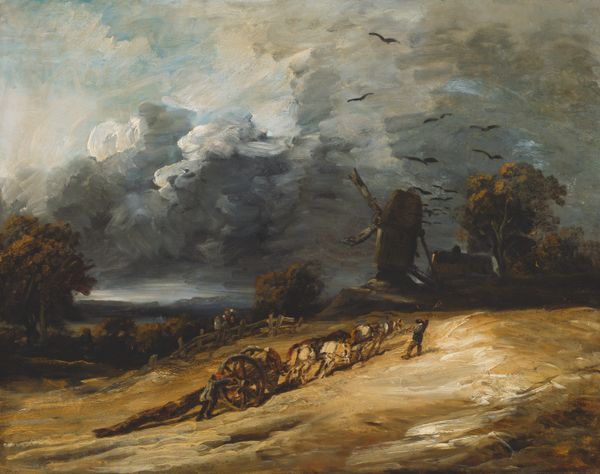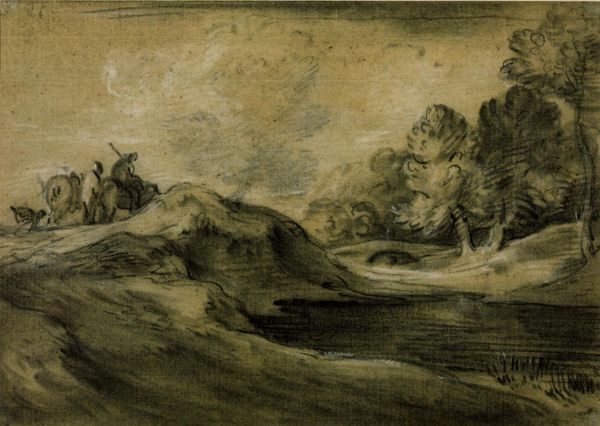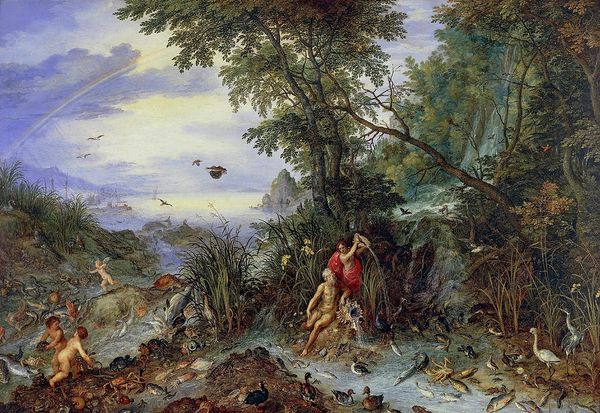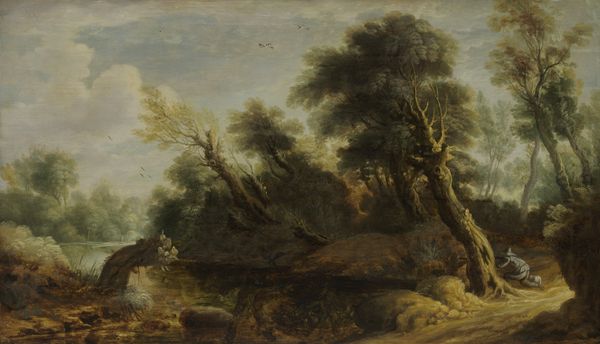
painting, oil-paint
#
narrative-art
#
baroque
#
painting
#
oil-paint
#
landscape
#
figuration
#
oil painting
#
history-painting
Dimensions: overall: 118.1 x 146.7 cm (46 1/2 x 57 3/4 in.)
Copyright: National Gallery of Art: CC0 1.0
Editor: Here we have Alessandro Magnasco’s “Christ at the Sea of Galilee,” painted around 1740, rendered in oil. It’s… intense. The stormy sea feels so turbulent, and the figures seem caught in its chaotic embrace. What strikes you when you look at it? Curator: The means of production here are fascinating. Oil paint, by its very nature, allowed Magnasco to build up layers and create that sense of impasto, mimicking the choppy surface of the water. But think about where those pigments came from, the labor involved in grinding them, mixing them, the economic system that supported their distribution. How does understanding that context shift your perception of the ‘intensity’ you mentioned? Editor: I guess it makes it feel less spontaneous and more deliberate, shaped by a whole chain of production. Do you think Magnasco was making a statement about that system? Curator: Perhaps not consciously, but art never exists in a vacuum. Consider the role of the patron in commissioning such a work. Was it destined for a private collection, a church, influencing the subject matter and the artist's approach? The ‘spiritual’ experience we have viewing it is intertwined with those material and social realities. Editor: That makes so much sense. It's easy to get caught up in the narrative, but the physical existence of the painting tells another story. Curator: Exactly. Think about the canvas itself – linen woven by someone, stretched, primed. All those steps shape the final image. Where does “high art” begin and the labor of craftspeople end? Magnasco's brushstrokes obscure those lines. Editor: Wow, I never considered the canvas as an integral part of the meaning! It’s a totally different way to see art. Thanks. Curator: And thank you for raising a very keen initial observation! It's often in those immediate reactions that the most insightful questions emerge.
Comments
No comments
Be the first to comment and join the conversation on the ultimate creative platform.
